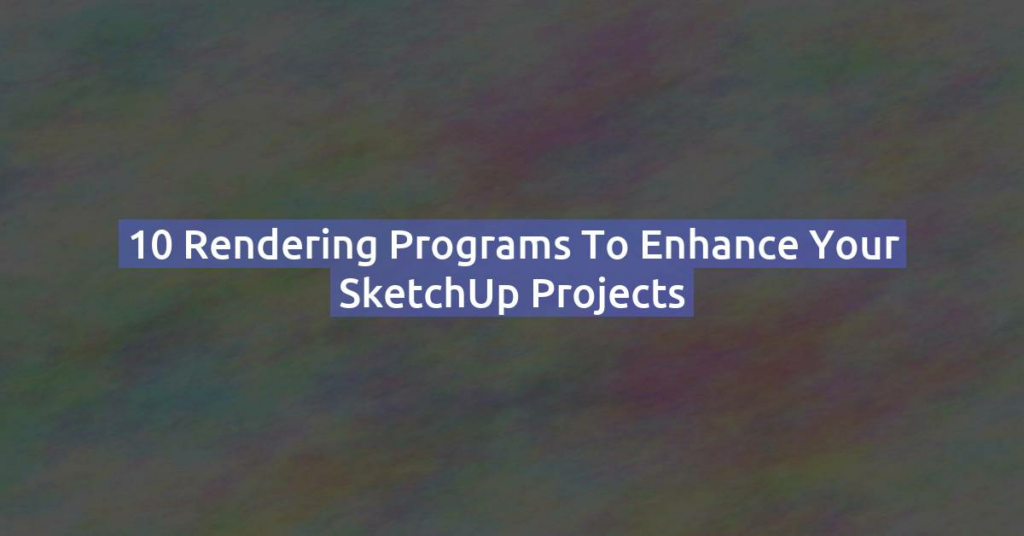Architecture is an art form that marries creativity with functionality, and the ability to effectively communicate design concepts is essential in the architectural industry. In today’s digital age, architectural visualization plays a crucial role in presenting ideas, garnering client approval, and bringing projects to life before they’re built. SketchUp, with its intuitive interface and powerful features, has become a go-to tool for architects seeking to create stunning architectural visualizations. In this blog post, we’ll explore how architects can leverage SketchUp to design breathtaking architectural visualizations that captivate clients and stakeholders alike.
Modeling Architectural Elements:
At the heart of every architectural visualization lies the 3D model. SketchUp’s robust modeling tools allow architects to accurately represent architectural elements such as buildings, facades, interiors, and landscapes. From conceptual sketches to detailed models, SketchUp offers flexibility and precision, enabling architects to bring their design visions to life with ease. With features like the Push/Pull tool, Follow Me tool, and Component Library, architects can efficiently model complex geometries and intricate details, ensuring that every aspect of their design is faithfully represented in the visualization.
Applying Materials and Textures:
Once the basic structure is in place, architects can enhance their visualizations by applying materials and textures to surfaces within SketchUp. Whether it’s brick, wood, glass, or concrete, SketchUp’s extensive material library offers a wide range of options to choose from. Architects can customize materials by adjusting properties such as color, reflectivity, and texture scale, allowing them to achieve the desired look and feel for their design. By incorporating realistic materials and textures, architects can elevate the quality of their visualizations and create immersive experiences that resonate with clients and stakeholders.
Utilizing Lighting Techniques:
Lighting plays a critical role in architectural visualization, as it not only illuminates the space but also sets the mood and ambiance. SketchUp provides architects with various lighting techniques to enhance their visualizations and create compelling scenes. Whether it’s natural light streaming through windows, artificial lighting fixtures illuminating interiors, or exterior lighting casting shadows and highlights, SketchUp’s lighting tools enable architects to simulate real-world lighting conditions and bring their designs to life in a photorealistic manner. By strategically placing lights and adjusting settings such as intensity and color temperature, architects can evoke emotions and evoke a sense of realism in their visualizations.
Creating Compelling Renderings:
The final step in the architectural visualization process is rendering, where the 3D model is transformed into a photorealistic image or animation. SketchUp offers a variety of rendering plugins and extensions that enable architects to produce high-quality renderings that showcase their designs in the best possible light. Whether it’s generating still images, interactive panoramas, or immersive virtual reality experiences, SketchUp’s rendering capabilities allow architects to communicate their design intent with clarity and impact. By adding context, atmosphere, and detail to their visualizations, architects can create compelling presentations that resonate with clients and stakeholders, ultimately leading to greater buy-in and project success.
In conclusion, SketchUp empowers architects to design stunning architectural visualizations that capture the imagination and inspire action. By leveraging SketchUp’s modeling tools, materials and textures, lighting techniques, and rendering capabilities, architects can create immersive visualizations that effectively communicate their design concepts and bring their projects to life in vivid detail. Whether it’s presenting ideas to clients, collaborating with team members, or showcasing designs to the public, SketchUp offers architects a versatile platform for realizing their architectural visions and shaping the built environment for generations to come.



